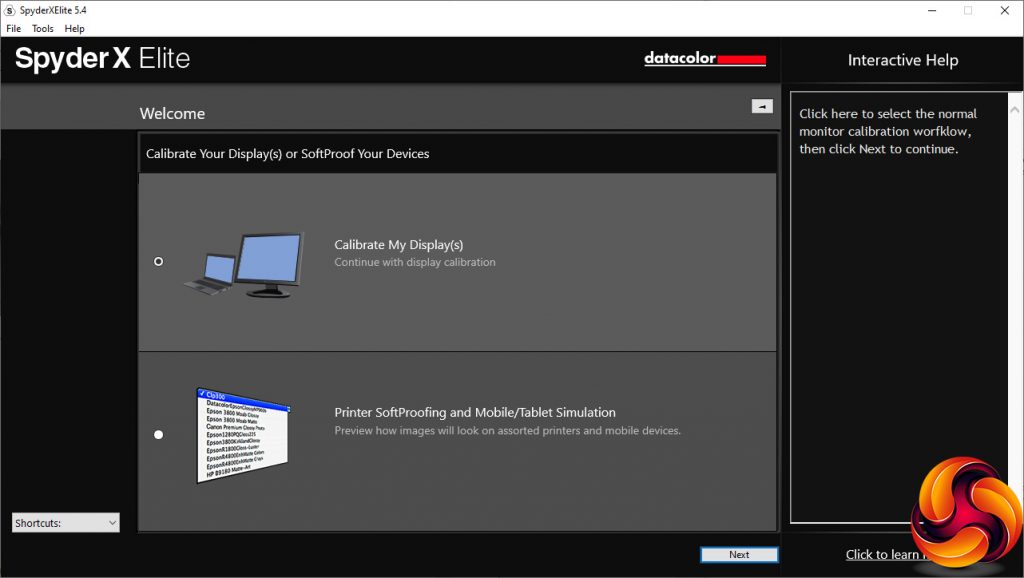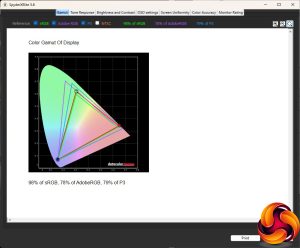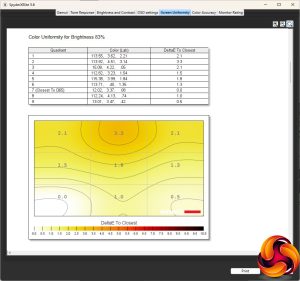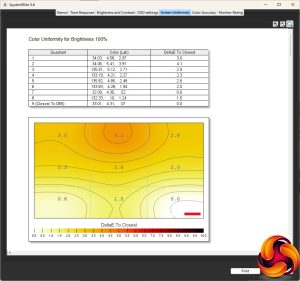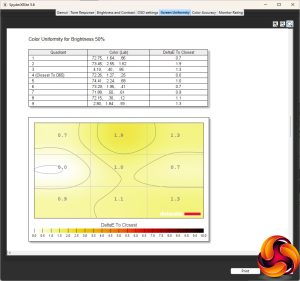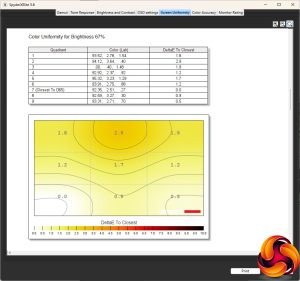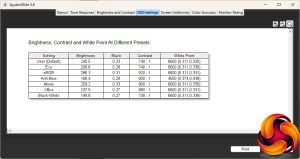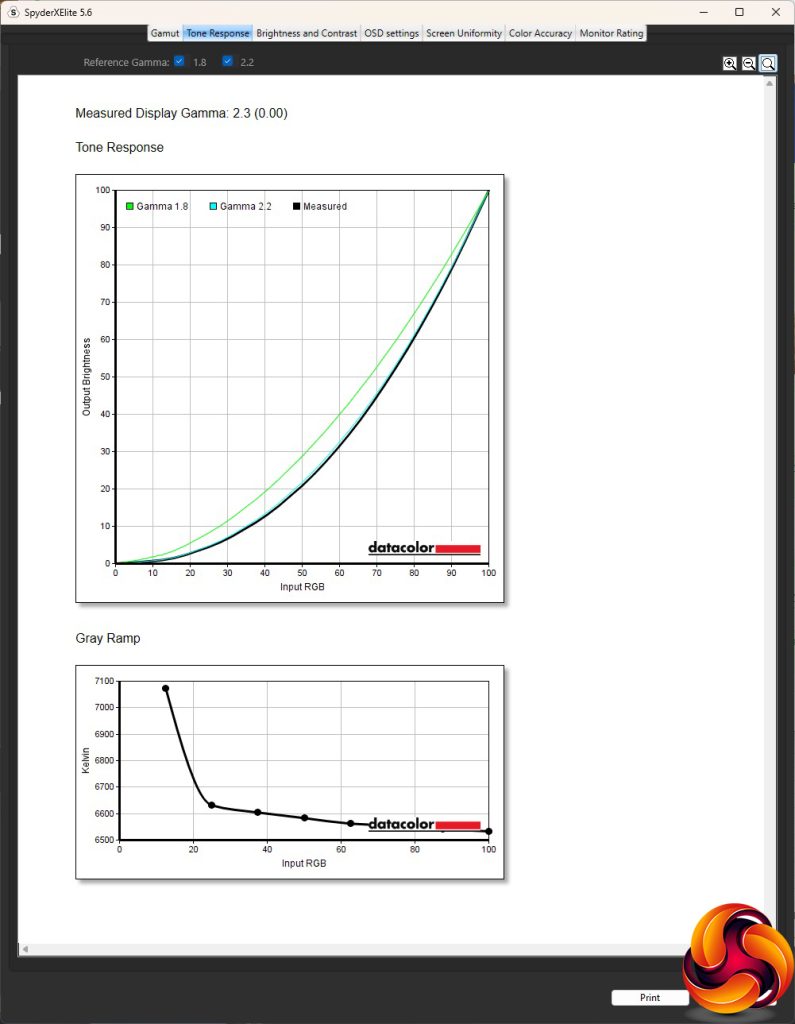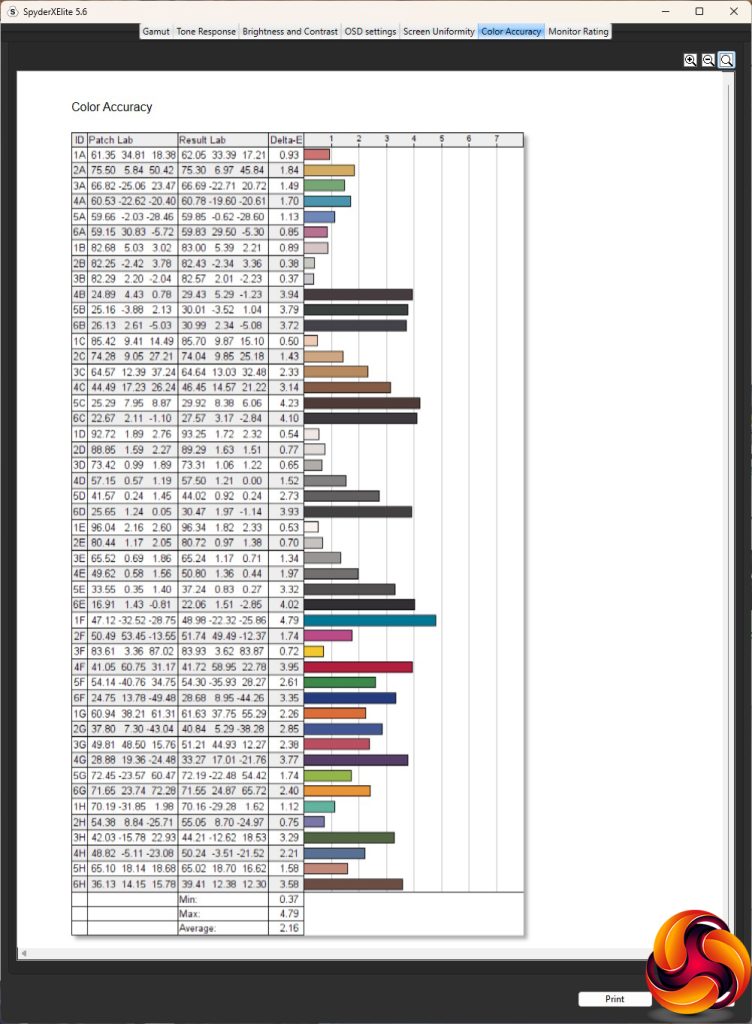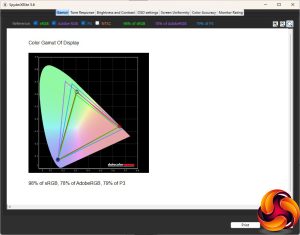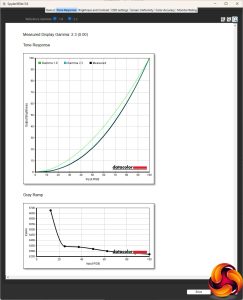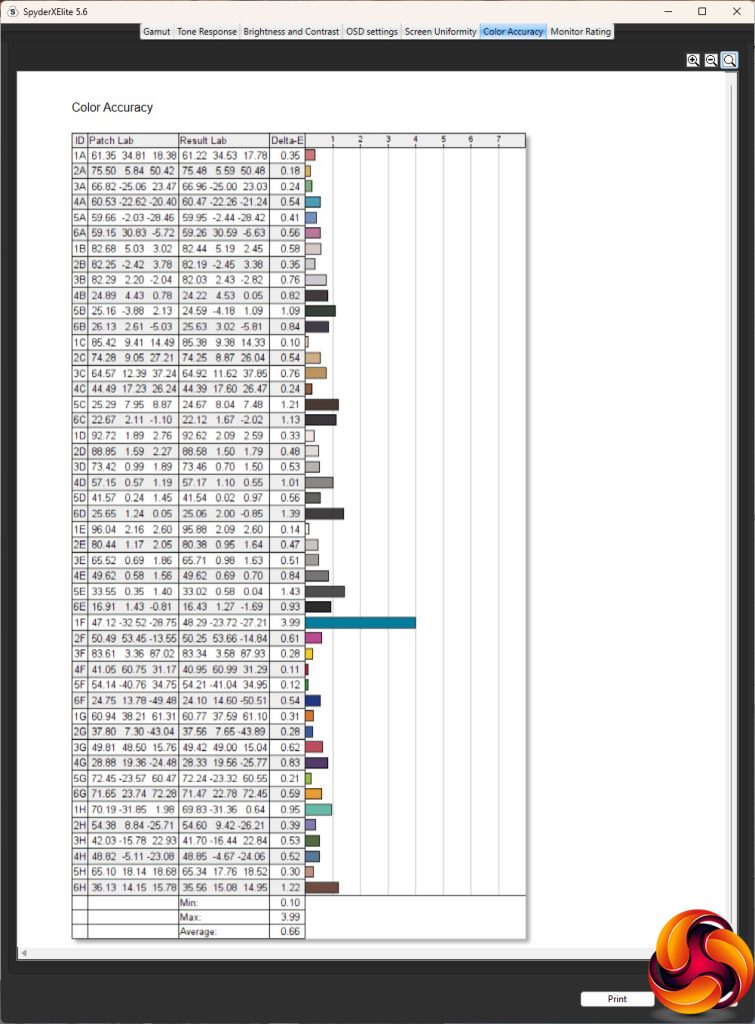Our main test involves using a DataColor SpyderX Colorimeter to assess a display’s image quality. The device sits on top of the screen while the software generates colour tones and patterns, which it compares against predetermined values to work out how accurate the screen is.
The results show –
- A monitor’s maximum brightness in candelas or cd/m2 at various levels set in the OSD.
- A monitor’s contrast ratio at various brightness levels in the OSD.
- The brightness deviation across the panel.
- The black and white points.
- The colour accuracy, expressed as a Delta E ratio, with a result under 3 being fine for normal use, and under 2 being great for colour-accurate design work.
- The exact gamma levels, with a comparison against preset settings in the OSD.
We first run this test with the display in its default, out-of-the-box state, with all settings on default. We then calibrate the screen using the Spyder software and run the test again.
We always test the display subjectively on the Windows desktop, using it for general tasks such as browsing and word processing, and with games as well, even if the display is not intended solely for that purpose.
We pay careful attention to any artefacts, ghosting or motion blur, and enable any gaming-specific features, such as adaptive-sync settings like G-Sync or FreeSync, using a compatible graphics card in our test PC.
We performed the quality tests on the MSI Modern MD272QP Ultramarine at its native 2,560 x 1,440 resolution in the default mode, after resetting the OSD, which sets the refresh to 60Hz. Our test system was equipped with an AMD Radeon Vega Frontier Edition graphics card, which supports FreeSync, but not G-sync, obviously, because it isn't made by NVIDIA.
The gamut scores are a little disappointing. We expect all monitors to deliver 100 per cent sRGB nowadays, but the MD272QP only managed 98 per cent. The results of 78 per cent AdobeRGB and 79 per cent P3 are both also a little under par. It's worth nothing that MSI only specifies this screen for 95 per cent sRGB.
Brightness uniformity is okay in the top 2/3rds of the screen, but the bottom third is a bit more deviant.
However, colour uniformity is excellent across the full range of brightness levels.
The fact that MSI didn't rate this panel for brightness in its specifications makes sense when you see how it scores in this area. Even at 100 per cent, the MD272QP only managed 273.5cd/m2, which is rather low even for an IPS display. Contrast maxes out at 740:1, which is also low even for IPS. However, the white point is absolutely spot on 6500K across the range, which is exactly what it is supposed to be.
The default User mode has a 70 per cent brightness, which equates to 240.5cd/m2, with 740:1 contrast and a 6600K white point (strangely 100K up from when we tested brightness and contrast). The sRGB mode is brighter at 286.3cd/m2, and has a better 920:1 contrast, but the same 6600K white point. Eco naturally drops the brightness to 208.6cd/m2, but with the same 740:1 contrast and 6600K white point. Anti-Blue uses the lowest 168.4cd/m2 brightness, with just 600:1 contrast. Naturally, the white point is much warmer at 4500K, because there is less blue light.
Movie mode has a relatively high (for this monitor) brightness of 259.2cd/2 alongside a higher 800:1 contrast than default, but the same 6600K white point. We often see movie modes employing a cooler colour balance. Office has a similar 237.5cd/m2 brightness as default and the same 6600K white point, but with a higher 880:1 contrast. Finally, Black-White opts for 199.8cd/m2 brightness, 740:1 contrast and the same 6600K white point. But this is a greyscale view, with all the colour removed.
There is only one gamma setting, but at least it's just about where it should be, delivering a recorded level of 2.3.
Since this is a professionally oriented screen with an IPS panel, we expected strong colour accuracy. However, by default the performance is merely okay, with an average deviation of 2.16. So although we often don't see a huge benefit from calibration with contemporary monitors, we fired up the SpyderX once more to see if we could improve things in this area.
After calibration, the Gamut was as mediocre as before, with a disappointing 98 per cent sRGB, 78 per cent AdobeRGB, and 79 per cent of P3.
As usual, the gamma remained unchanged by calibration, hitting the same 2.3 as before.
Calibration was clearly worth the effort when it came to colour accuracy, however. The average deviation dropped to 0.66, which is one of the best scores we've seen. Clearly, this panel is capable of great things – but you need to adjust it properly to get the most out of it.
As this isn't in any shape or form a gaming screen, we didn't test any games on the MD272QP. But we did fire up Netflix, switched to Movie mode, and tried out an episode of The Witcher, which looked pretty good.
 KitGuru KitGuru.net – Tech News | Hardware News | Hardware Reviews | IOS | Mobile | Gaming | Graphics Cards
KitGuru KitGuru.net – Tech News | Hardware News | Hardware Reviews | IOS | Mobile | Gaming | Graphics Cards

